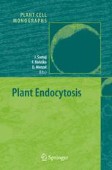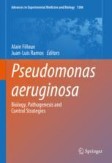Search
Search Results
-
Regulation of RAS palmitoyltransferases by accessory proteins and palmitoylation
Palmitoylation of cysteine residues at the C-terminal hypervariable regions in human HRAS and NRAS, which is necessary for RAS signaling, is...

-
Mechanisms of SNARE proteins in membrane fusion
Soluble N -ethylmaleimide-sensitive factor attachment protein receptors (SNAREs) are a family of small conserved eukaryotic proteins that mediate...

-
Accessory proteins of the RAS-MAPK pathway: moving from the side line to the front line
Health and disease are directly related to the RTK-RAS-MAPK signalling cascade. After more than three decades of intensive research, understanding...

-
Convenient synthesis and delivery of a megabase-scale designer accessory chromosome empower biosynthetic capacity
Synthetic biology confers new functions to hosts by introducing exogenous genetic elements, yet rebuilding complex traits that are based on...

-
Molecular characterization suggests kinetic modulation of expression of accessory viral protein, W, in Newcastle disease virus infected DF1 cells
Viruses adopt strategies to efficiently utilize their compact genome. Members of the family Paramyxoviridae , exhibit a cotranscriptional RNA editing...

-
Female accessory glands of Adoxophyes honmai contain elicitor inducing tea leaves to arrest the egg-larval parasitoid, Ascogaster reticulata
Plants exhibit various defense mechanisms against pathogens and herbivores, which are induced by pathogen/herbivore-derived elicitors. Ascogaster...

-
Folding of newly synthesised proteins in the endoplasmic reticulum
The endoplasmic reticulum (ER) is a membranous compartment that can be found within any nucleated eukaryotic cell. Its job is to oversee the...
-
Membrane Proteins in Plant Salinity Stress Perception, Sensing, and Response
Plants have several mechanisms to endure salinity stress. The degree of salt tolerance varies significantly among different terrestrial crops....

-
SARS-CoV-2 proteins structural studies using synchrotron radiation
In the process of the development of structural biology, both the size and the complexity of the determined macromolecular structures have grown...

-
Analysis of five near-complete genome assemblies of the tomato pathogen Cladosporium fulvum uncovers additional accessory chromosomes and structural variations induced by transposable elements effecting the loss of avirulence genes
BackgroundFungal plant pathogens have dynamic genomes that allow them to rapidly adapt to adverse conditions and overcome host resistance. One way by...

-
Accessory Chromosomes of the Fusarium oxysporum Species Complex and Their Contribution to Host Niche Adaptation
The genome of Fusarium oxysporum, an ascomycete fungus, can be divided into two compartments: core chromosomes (CCs) and accessory chromosomes (ACs)....
-
Homology Modeling of Transporter Proteins
Membrane transporter proteins are divided into channels/pores and carriers and constitute protein families of physiological and pharmacological...
-
Structural and non-structural proteins in SARS-CoV-2: potential aspects to COVID-19 treatment or prevention of progression of related diseases
Coronavirus disease 2019 (COVID-19) is caused by a new member of the Coronaviridae family known as severe acute respiratory syndrome coronavirus 2...

-
Dynamin-Related Proteins in Plant Endocytosis
Over the past decade, it has become evident that multiple endocytic pathways operate in eukaryotic cells, and several of these are dependent on...
-
Chaperone proteins and peroxisomal protein import
Peroxisomes are ubiquitous organelles present in most eukaryotic cells. Their role in cellular metabolism is diverse among species. An array of genes...
-
Pseudomonas aeruginosa Pangenome: Core and Accessory Genes of a Highly Resourceful Opportunistic Pathogen
In this chapter, we leverage a novel approach to assess the seamless population structure of Pseudomonas aeruginosa, using the full repertoire of...
-
Characterization of Multi-Domain Proteins in the ArsR/SmtB Family of Transcriptional Regulators
AbstractStudies centered on single-domain proteins revealed several fundamental characteristics about how they work, but the multimeric proteins are...

-
Seminal fluid proteins induce transcriptome changes in the Aedes aegypti female lower reproductive tract
BackgroundMating induces behavioral and physiological changes in the arbovirus vector Aedes aegypti , including stimulation of egg development and...

-
Microbial membrane transport proteins and their biotechnological applications
Because of the hydrophobic nature of the membrane lipid bilayer, the majority of the hydrophilic solutes require special transportation mechanisms...

-
The function of Sec1/Munc18 proteins – Solution of the mystery in sight?
Members of the Sec1/Munc18 (SM) protein family form a central part of the machinery responsible for transport vesicle docking and fusion. Their...
